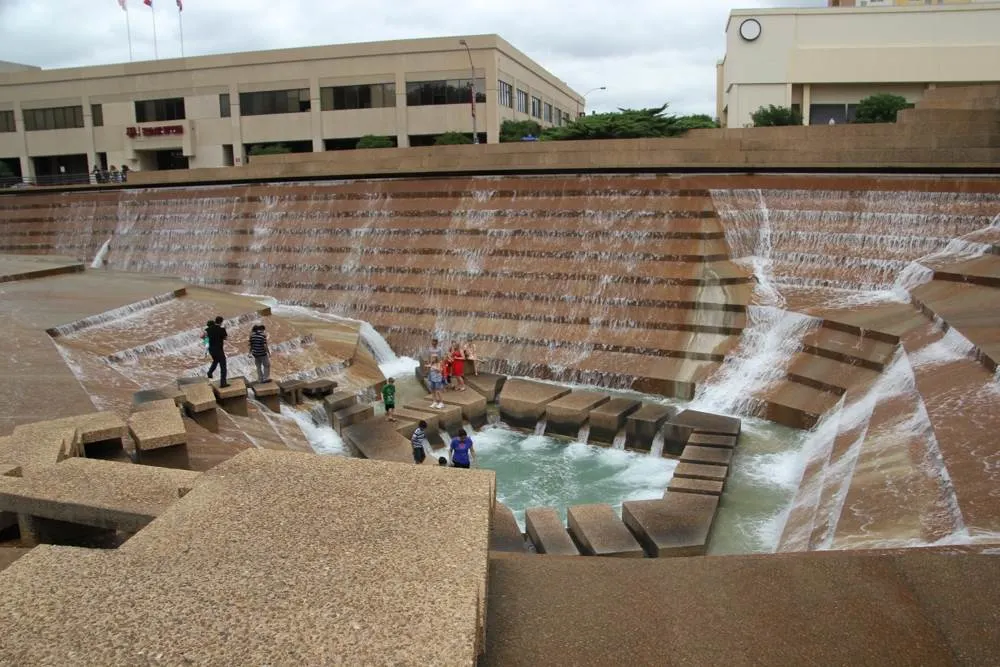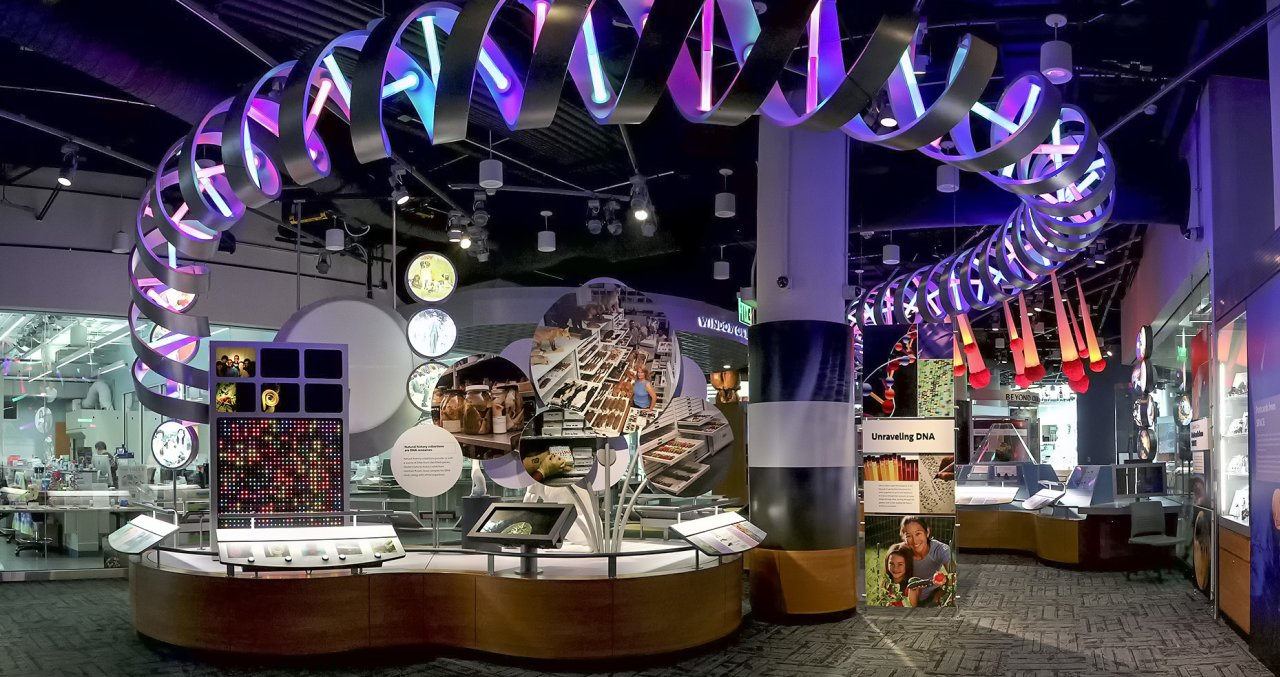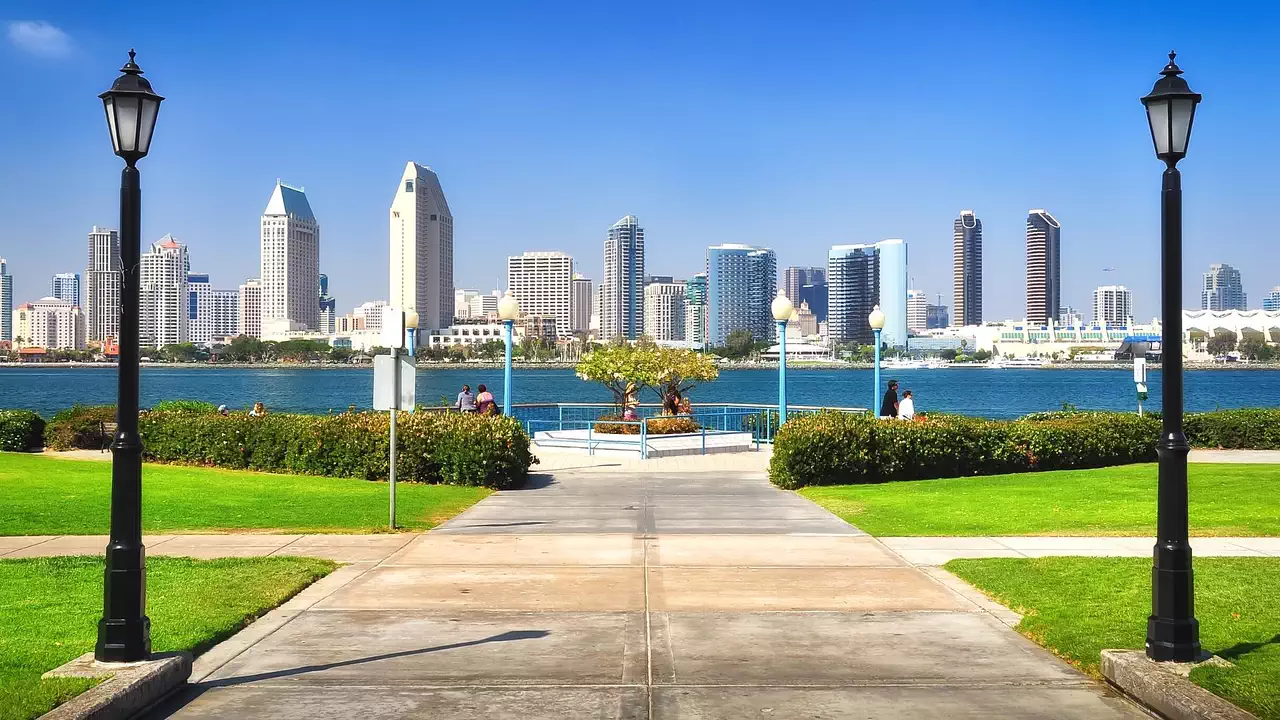Baltimore charms visitors with its unique personality shaped by rich history and arts scene. Nicknamed “Charm City,” Maryland’s largest metropolis offers memorable sights and experiences without emptying your wallet.
| Activity | Description |
|---|---|
| Inner Harbor | Enjoy waterfront views, historic ships, and free events. |
| Fort McHenry | Tour the monument and learn its history. |
| Peabody Library | Admire the architecture and collections. |
| Graffiti & Street Art | Explore local art in various neighborhoods. |
| Museum of Industry | Discover Baltimore’s industrial past. |
| Washington Monument | Climb for city views and historical exhibits. |
| Pratt Central Library Tours | Enjoy the architecture and history. |
| Lunchtime Recitals | Attend free musical performances at the Basilica. |
| Spotlighters Theatre | See plays and readings for free. |
| Maryland Zoo | View animals in outdoor areas. |
| Druid Hill Park | Outdoor activities and free concerts. |
| Lexington Market | Try samples of local foods. |
Iconic landmarks, scenic parks, evocative museums and vibrant neighborhoods reward travelers with engaging attractions across this harbor hub. Use this insider’s guide to make the most of Charm City without spending a dime.
Explore the Inner Harbor

Name and Location: Inner Harbor, Baltimore
History and Significance: For decades, Baltimore’s vibrant Inner Harbor waterfront has acted as a landmark downtown hub filled with shops, restaurants, museums, attractions and picturesque promenades.
What to Expect: Visitors can explore the sparkling Inner Harbor area via strolls, boat tours and attractions while enjoying views of ships, waterside parks, neighborhoods like Federal Hill, the National Aquarium and more.
Visitor Information: Free public access. Attractions have varied hours and admission fees. Boat tours offered seasonally.
Baltimore’s famous Inner Harbor delivers fantastic free entertainment. Stroll along the brick promenades taking in views of boats dotting the Patapsco River against the city skyline. See the historic ships docked as part of Historic Ships in Baltimore, like the last surviving WWII submarine in the country – the USS Torsk. Daily cannons blast off pier-side adding to the maritime atmosphere. The area also hosts free events like yoga classes, live music, sand castle contests and more throughout the summer.
Tour Fort McHenry National Monument

Name and Location: Fort McHenry National Monument and Historic Shrine
History and Significance: Built in 1798, Fort McHenry defended Baltimore Harbor through the Battle of Baltimore, inspiring Francis Scott Key’s poem that became “The Star-Spangled Banner.” A national monument since 1925.
What to Expect: Guests tour the star-shaped fort’s buildings, tunnels and grounds. A visitor center details American history and the national anthem’s origins through exhibits and an interpretive film. Ranger talks given.
Visitor Information: Open daily except a few winter holidays. Regular daytime hours. Nominal entrance fees charged.
Walk the grounds of Fort McHenry National Monument and Historic Shrine to understand its pivotal role during the War of 1812’s Battle of Baltimore when it defended the city against British attack. Outdoor exhibits feature replicas of tents and artillery shedding light on soldier life. Rangers also give educational talks about the battle that inspired Francis Scott Key to write the poem later set to music as “The Star-Spangled Banner,” America’s national anthem.
See the Peabody Library at Johns Hopkins

Name and Location: George Peabody Library at Johns Hopkins University
History and Significance: The Peabody Library opened in 1878, funded by financier George Peabody. The palatial neo-Greco interior awes with ornate architectural details surrounding the library’s vast collection spanning 300,000+ volumes.
What to Expect: Step into the soaring atrium with wrought-iron balconies overlooking walls of books. Researchers access materials onsite by request in this still functioning academic archive that doubles as an architectural showpiece.
Visitor Information: Free guided tours most Fridays at noon. Special presentations and events occur periodically highlighting the library’s rich heritage.
Even if you don’t have a student ID for Johns Hopkins’ Milton S. Eisenhower Library, bibliophiles can still gain free entry to the George Peabody Library on campus. The ornate 1878 library impresses visitors with its soaring atrium housing over 300,000 volumes. Intricately carved shelves stretch 61 feet high under a glass skylight ceiling. Free tours provide insight about the space’s history and architecture when scheduled.
Photograph Graffiti & Street Art
Name and Location: Baltimore Street Art & Graffiti
History and Significance: Once rooted in vandalism and decay, street art has transformed parts of Baltimore into colorful, creative canvases with spray paint murals, wheatpastes and installations in distinct neighborhoods and Highlandtown’s Graffiti Alley corridor.
What to Expect: See amazing homegrown and globally known artists’ works around East Baltimore’s creative community. New pieces appear constantly, fueling public art walks and photo ops aplenty.
Visitor Information: Free public viewing year-round. Guided tours available. Respect private property.
Baltimore nurtures local artists, with opportunities to enjoy creativity around every corner for free. Graffiti and murals color tunnels and buildings across neighborhoods like Station North Arts District and Highlandtown. Take self-guided tours to snapshot standouts like the Beautification of Franklin Street project, umbrella girl mural in Patterson Park and the Baltimore Love Project. Many works highlight city culture, resilience and hope.
Explore Baltimore Museum of Industry

Name and Location: Baltimore Museum of Industry
History and Significance: The BMI explores Maryland’s industrial innovations and workforce culture from early manufacturing equipment to cannery operations. Hands-on exhibits, a restoration workshop and event programming engage visitors.
What to Expect: Lifelike scenes, machinery demos, photographs and films connect the state’s industries to citizens’ daily lives. Watch skilled volunteers demonstrate production processes too! A gift shop sells regional foods and goods onsite.
Visitor Information: Standard daytime hours year-round excluding major holidays and some Mondays. Modest admission fee charged.
Gain insight into Baltimore’s history as an industrial and manufacturing powerhouse at the Baltimore Museum of Industry. Located in an old cannery, the museum’s permanent exhibits feature interactive elements like a working printer and operational machinery from local factories. Visitors can also explore special displays focused on clothing manufacturing, women in WWII and artifacts shedding light on the city’s immigrants.
See the Washington Monument

Name and Location: Washington Monument, Mount Vernon Cultural District
History and Significance: Completed in 1829 to honor America’s first president, Baltimore’s iconic 178-foot Doric column still overlooks the city from Mount Vernon Place, making it the early United States’ first major public monument.
What to Expect: A symbol of community pride, the column soars above four park quadrants popular for concerts and events. Climb the 227 steps inside for panoramic views from the small observation deck near the top.
Visitor Information: Monument and lower museum rooms open Wednesday-Sunday. Nominal entry fees. Guided tours offered plus annual open house events.
While smaller than its DC namesake, Baltimore’s 178-foot tall Washington Monument became the first monument dedicated to George Washington in 1829. Climb the 227 spiral staircase steps to the top for panoramic city views. Exhibits inside provide a timeline of the structure’s history from breaking ground using relics found at the Bunker Hill and Yorktown battlefields to modern-day lighting improvements and restoration.
Go On Enoch Pratt Central Library Tours

Name and Location: Enoch Pratt Central Library, Mount Vernon Cultural District
History and Significance: Established in 1882, the Enoch Pratt Free Library system aimed to make information freely accessible citywide. The historic Central Library branch engages lifelong learning through resources, research assistance, programs and classes.
What to Expect: Browse circulating materials across expansive rooms. Knowledgeable staff help access information. Cultural events occur regularly like author talks, poetry readings, workshops and children’s activities. Free 90-minute building tours given.
Visitor Information: Open M-W 10am–7pm, Th 10am–5pm, F-Sat 10am–5pm. Tours select Fridays and Saturdays, reservations required.
Architecture aficionados appreciate tours of the Enoch Pratt Free Library Central location. Completed in 1933, the historic landmark mixes Beaux Arts and Art Deco elements across its handsome exterior and interior spaces. Knowledgeable docents share stories as they walk visitors through ornate rooms like the Louisiana Pedimento lobby featuring intricate ironwork, marble walls and bronze light fixtures originally intended for a European castle.
Attend Free Lunchtime Recitals

Name and Location: Lunchtime Recitals at Peabody Institute, Mount Vernon
History and Significance: Peabody music students gaining performance skills have shared free classical concerts with the public Tuesdays and Thursdays during the academic year for decades inside the historic Conservatory building.
What to Expect: Mid-day musical interludes might feature pianists, vocalists, string or wind instrumentalists within the intimate setting delivering focused 40-minute classical, chamber, opera or lieder selections. Monthly jazz and electronic music sessions too.
Visitor Information: No tickets necessary, seating first come. Fall and spring semester schedule posted online. Performances last 40 minutes beginning 12:15pm.
Baltimore Basilica, also known as America’s First Cathedral, hosts around 20 free pipe organ and vocal ensemble recitals annually around lunchtime. The noon-hour musical performances happen against the backdrop of the Basilica’s stunning Byzantine architecture showcasing intricate mosaic tile artworks. Performance calendars get posted on their website for easy scheduling around hearing heavenly melodies fill the sanctuary.
See a Play at Spotlighters Theatre

Name and Location: Spotlighters Theatre, Mount Vernon Cultural District
History and Significance: Run fully by volunteers since opening inside a former Studebaker service station in 1962, intimate Spotlighters serves up quality local theater productions from edgy dramas and big Broadway musicals to smart comedies.
What to Expect: As Baltimore’s longest operating community theater, Spotlighters challenges audiences with provocative, modern performances from regional talents on and off stage in an intimate setting seating under 100 per show.
Visitor Information: Season runs September to May featuring about 8 productions. Ticket prices $5-$20. Parking garage across street.
Spotlighters Theatre, Baltimore’s longest-running community theater, puts on quality shows including comedies, dramas and musicals on their intimate in-the-round stage. While ticketed plays happen on weekends, everyone can attend free readings of upcoming productions on select Monday nights. Arrive early to get seats for enjoying sneak peek acting while indirectly supporting Baltimore’s arts scene.
Tour the Maryland Zoo

Name and Location: The Maryland Zoo in Baltimore, Druid Hill Park
History and Significance: Open since 1876, The Maryland Zoo in Baltimore remains among America’s oldest parks with award-winning habitats hosting over 2,000 animals across 190 species, plus botanical gardens and kid zones situated within wide Druid Hill Park.
What to Expect: Get eye-to-eye with exotic mammals, amphibians, birds and reptiles through immersive exhibits recreating species’ native environments. Special events, keeper talks and demonstrations further engagement regularly.
Visitor Information: General hours March-December are 10am-4pm daily. Selected winter days have modified hours. Admission fees charged.
While admission to see exotic animals at The Maryland Zoo costs money, visitors can freely see over 150 creatures in the zoo’s outdoor animal viewing areas. Giraffes, zebras, camels, bison and more roam habitats replicating their natural environments without fences obstructing photographs. Special animal encounters also happen daily at the zoo’s venue perimeter, allowing kids to get nose-to-nose with goats or feeding lorikeets landing on their hands.
Explore Druid Hill Park

Name and Location: Druid Hill Park
History and Significance: Established in 1860, Druid Hill Park spans over 700 acres offering myriad recreation options from jogging trails to pool complexes, picnic sites, athletic fields, playgrounds and the Maryland Zoo within a verdant urban oasis.
What to Expect: Wander wooded areas, smell roses in bloom inside Rawlings Conservatory, rent paddle boats, take fitness classes, visit historic sites, play disc golf, join cultural celebrations and more while soaking up nature without leaving the city.
Visitor Information: Seasonal attractions. Open daily from dawn until dusk year-round. Most activities are free, some have fees.
Covering over 700 acres, Druid Hill Park provides ample room for exploring forests, meadows, trails, lakes and more without leaving Baltimore’s city limits. Have a picnic, go jogging and biking, toss around a frisbee, fish or attend free outdoor concerts and yoga classes. Don’t miss stopping by the historic Maryland Zoo located in the grounds, where free admission grants access to outdoor animal enclosures.
Try Samples at the Lexington Market

Name and Location: Lexington Market, downtown
History and Significance: Lexington Market launched in 1782 as a public food market hall in downtown Baltimore. Over 500 independently owned eateries, shops and vendors have continued providing diverse international flavors and products through changing times.
What to Expect: Nosh on local favorites like Faidley’s crabcakes alongside Korean, Mexican, Middle Eastern and more cuisines. Pick up fresh produce, meats, baked goods and sundry items while soaking up urban energy and culture.
Visitor Information: Monday-Saturday from 8:30am-6pm. Individual businesses hours may vary. Most vendors accept cash only. Casual attire welcomed.
Lexington Market continues Baltimore’s longest running market tradition since 1782. The current cavernous building stays packed with vendors slinging tasty eats. Explore colorful corridors trying free samples of local favorites like fried chicken, pit beef, seafood and Berger cookies – the official state dessert. Street performers entertain crowds navigating smelly but vibrant vendor stalls. It’s an essential Baltimore experience with no bill at the end.
Tour Westminster Hall & Burial Ground

Name and Location: Westminster Hall & Burial Ground
History and Significance: Constructed in 1852 as a Presbyterian church, Gothic revival-style landmark Westminster Hall also holds a burial ground with 18th century marble grave markers and catacombs below its sanctuary floor hosting luminaries like Edgar Allan Poe.
What to Expect: Tour Westminster’s soaring nave and unique catacombs daily. Costumed guides dramatize site history and notable burials on weekends. Special events, lectures and performances occur periodically coinciding with Poe’s October birthday.
Visitor Information: Self-guided hall access daily 10am-4pm, nominal donation requested. Weekend guided catacomb tours start at noon, 1:30 and 3pm, reservations encouraged.
History lives on at Westminster Hall & Burial Ground, resting place of Edgar Allen Poe along with other 19th century Baltimore luminaries. Costumed reenactors and summer walking tours recount tales focused on the cemetery’s most famous residents. Visitors also appreciate the site’s striking Gothic Revival church designed by architect Benjamin Latrobe, complete with crypts running below the sanctuary and the first domed building in town.
Watch Ships Along Harborplace

Name and Location: Harborplace Along the Inner Harbor
History and Significance: Harborplace’s twin glass pavilions opened in 1980 as downtown Baltimore’s first urban festival marketplace combining premier shopping, dining and entertainment with signature Inner Harbor location and maritime views.
What to Expect: Waterfront promenades surround this dining and retail complex where visitors can shop national brands and local boutiques while people watching and boat gazing along the water. Street performers entertain regularly.
Visitor Information: Harborplace open daily with extended hours in summer. Specific restaurants and stores may have varying hours. Garage parking fees apply.
Baltimore’s Inner Harbor bustles with activity from passenger vessels, private boats, water taxis and ships. Grab a perch anywhere harbor-side to watch coming and going nautical traffic, like historic ships docked at pier-side museums to colossal commercial container vessels navigating to nearby Port of Baltimore terminals. Outside McCormick & Schmick’s seafood restaurant at Harborplace, a viewing deck and cameras help you watch all the ships roll in without buying a thing.
Baltimore delivers delightful sights, sounds and experiences without cost thanks to this insider list. Through appreciating landmarks, nature, arts and history, visitors access the vibrancy powering Charm City’s revolutionary spirit and resilience. Follow this itinerary for imaginative adventures revealing Baltimore’s unique personality.





Join the Conversation